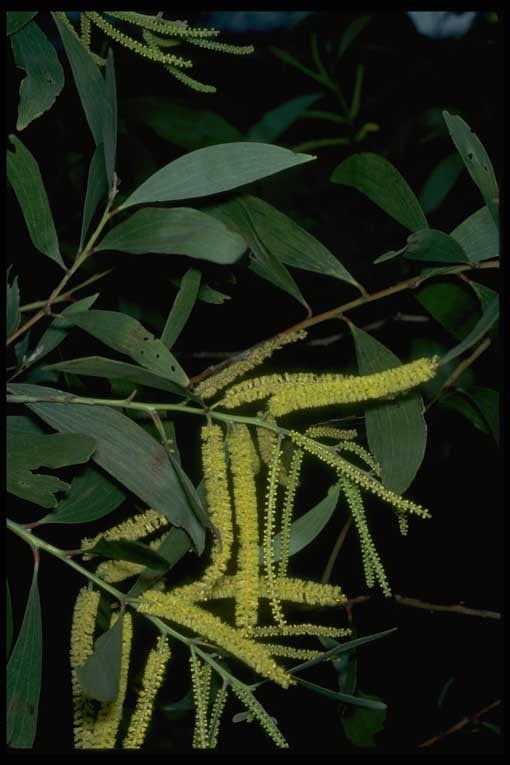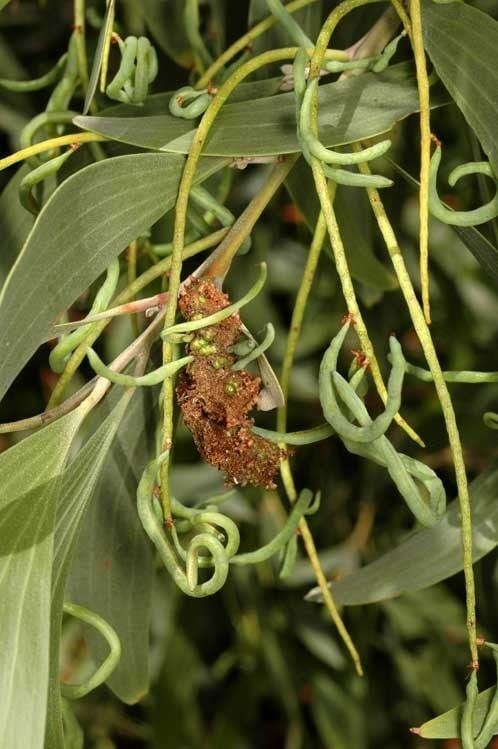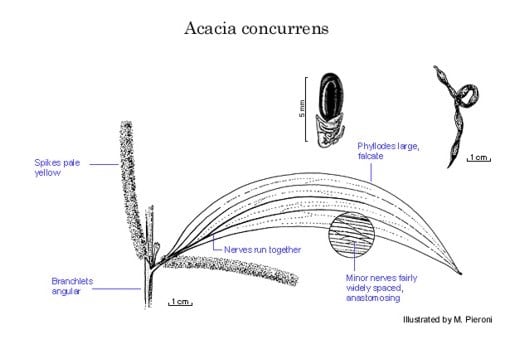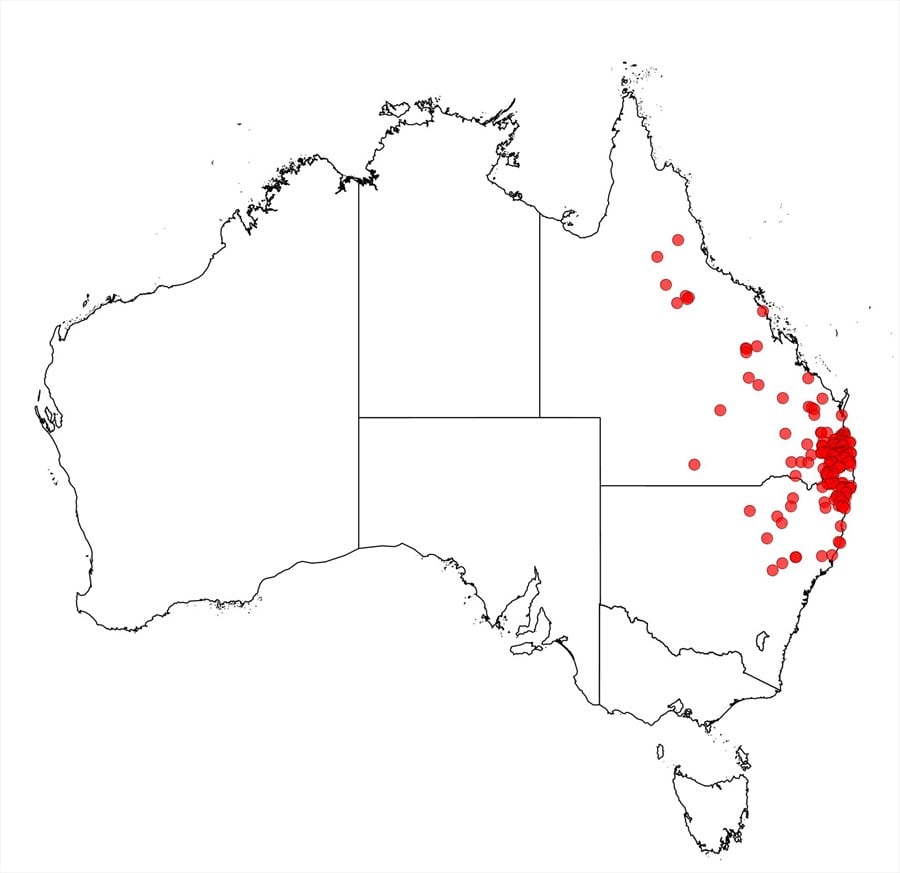Acacia concurrens Pedley
WATTLE
Acacias of Australia
Common Name
Curracabah
Family
Fabaceae
Distribution
Common in coastal areas from the Mooloolah R., Qld, to Hastings R., N.S.W., between 27ºS and 29ºS and E of 152ºE.
Description
Shrub or tree to 10 m high, single-stemmed, ±glaucous, glabrous. Bark longitudinally fissured, fibrous, grey-black. Branchlets angular, stout, brown, scurfy. Phyllodes obliquely very narrowly elliptic to narrowly elliptic, flat, with upper margin curved and lower straight, 8–16 (–18) cm long, (9–) 12–35 (–60) mm wide, coriaceous, ±scurfy when young, with (2–) 3–4 (–5) longitudinal veins more prominent (lower 2 confluent with each other near base); minor nerves 3 or 4 per mm, strongly anastomosing; gland 1, basal, to 2 mm above pulvinus. Spikes 3.5–11 cm long, pale yellow. Flowers 5-merous; calyx 0.6–1 mm long, dissected by 1/6–1/5, with a few hairs near base; corolla 1.8–2 mm long, dissected to 1/2, glabrous; ovary pubescent. Pods linear, slightly moniliform, semicircular, 5–10 cm long. Seeds longitudinal, elliptic, 3.5–4.5 mm long, brownish black; pleurogram without halo; areole open, oblong.
Phenology
Flowers July–Sept. in Qld, late Mar.–early Sept. in N.S.W.
Habitat
Grows in eucalypt forest and woodland, also as regrowth in heath, on hillsides or plateaux in sandy soils or sandy loam, often over shale.
Specimens
Qld: 1.5 km NW of Caloundra, J.H.Ross 3140 (BRI, CANB, HO, NSW, PERTH); Narangba, M.D.Tindale 653 (AD, CANB, E, K, MEL, PERTH); 4.8 km W of Aratula, M.D.Tindale 666 & D.Boyland (BRI, CANB, K, NSW, US). N.S.W.: Tabulam, S.Clark, J.Pickard & R.G.Coveny 1816 (AD, CANB, CHR, G, NSW, P, TNS, UC, Z); 3.2 km W of Legume, K.Thurtell & R.G.Coveny 3886 (A, AD, BRI, CANB, K, L, MEL, MO, NSW, US).
Notes
Acacia concurrens together with A. crassa, A. leiocalyx, A. longispicata and A. tingoorensis (syn. A. longispicata subsp. velutina) constitute a group of closely interrelated and taxonomically ‘difficult’ species belonging to the often confused and poorly defined ‘A. cunninghamii group’, see L.Pedley, Contrib. Queensland Herb. 15: 9 (1974) and Austrobaileya 1: 179 (1978). More recently a reappraisal of A. leiocalyx by L.Pedley, Austrobaileya 5: 313–320 (1999), resulted in the addition of two more endemic Qld species to the group, namely, A. faucium and A. fodinalis.. Acacia rubricaulis and especially A. burdekensis are not far removed from this group. Other species with spicate inflorescences and large phyllodes with anastomosing secondary nerves (and the major longitudinal nerves either running together or confluent with the lower margin near the base) have at various times been referred to this group, including A. cretata and A. tropica.
FOA Reference
Data derived from Flora of Australia Volumes 11A (2001), 11B (2001) and 12 (1998), products of ABRS, ©Commonwealth of Australia
Author
Edited by B.R.Maslin
Dr M.D.Tindale and Dr P.G.Kodela with the assistance of M.Bedward, S.J.Davies, C.Herscovitch, D.A.Keith and/or D.A.Morrison
This identification key and fact sheets are available as a mobile application:
URL: https://apps.lucidcentral.org/wattle/
© Copyright 2018. All rights reserved.










